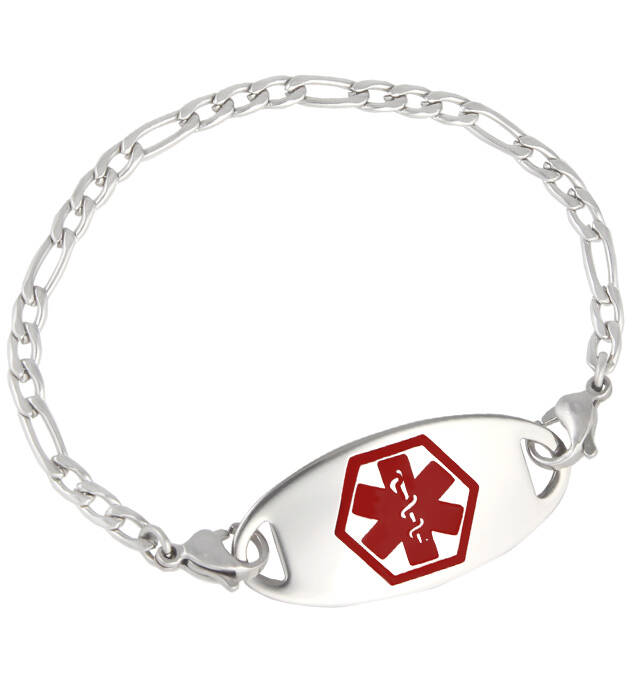What is the reason to wear a Medical Alert ID, and what information do you commonly include?
A medical alert identification device is often worn by someone with a known medical condition or severe allergy to alert emergency services and healthcare workers; it can assist in quickly providing life-saving information. It allows essential medical information to be communicated, even if the patient cannot communicate verbally. During an emergency, diagnostic and treatment decisions have to be made quickly; a medical alert device allows emergency services and healthcare workers to narrow their focus, find what the issue has a high probability of being, and increases the likelihood of positive outcomes.
Typically, medical alert identification is worn by people with:
One or more chronic medical conditions
Life-threatening allergies
Severe asthma
Autism
Dementia
Alzheimer
Mobility aids
Implanted medical devices
A medical condition that can render the patient incapable of speech
Information commonly included on the identification device is:
Name
Date of Birth
Medical conditions
Allergies
Medications
Supplies the patient has on them (EpiPen)
Emergency contact information
Medical alert identification jewelry, tattoos, and devices are a massive help to good Samaritans who may try and help in a medical emergency and can significantly impact medical care received. When purchasing a medical alert device and deciding what information should be included, you should start with a conversation with your primary care provider. Your provider will know what type of device is best and what information is most important to include for your care.
Forks Community Hospital
Disclaimer: This column is not intended as a diagnosis or recommended treatment of a specific condition. Answers are not a replacement for an individual medical evaluation. A licensed clinician should evaluate personal health concerns.



